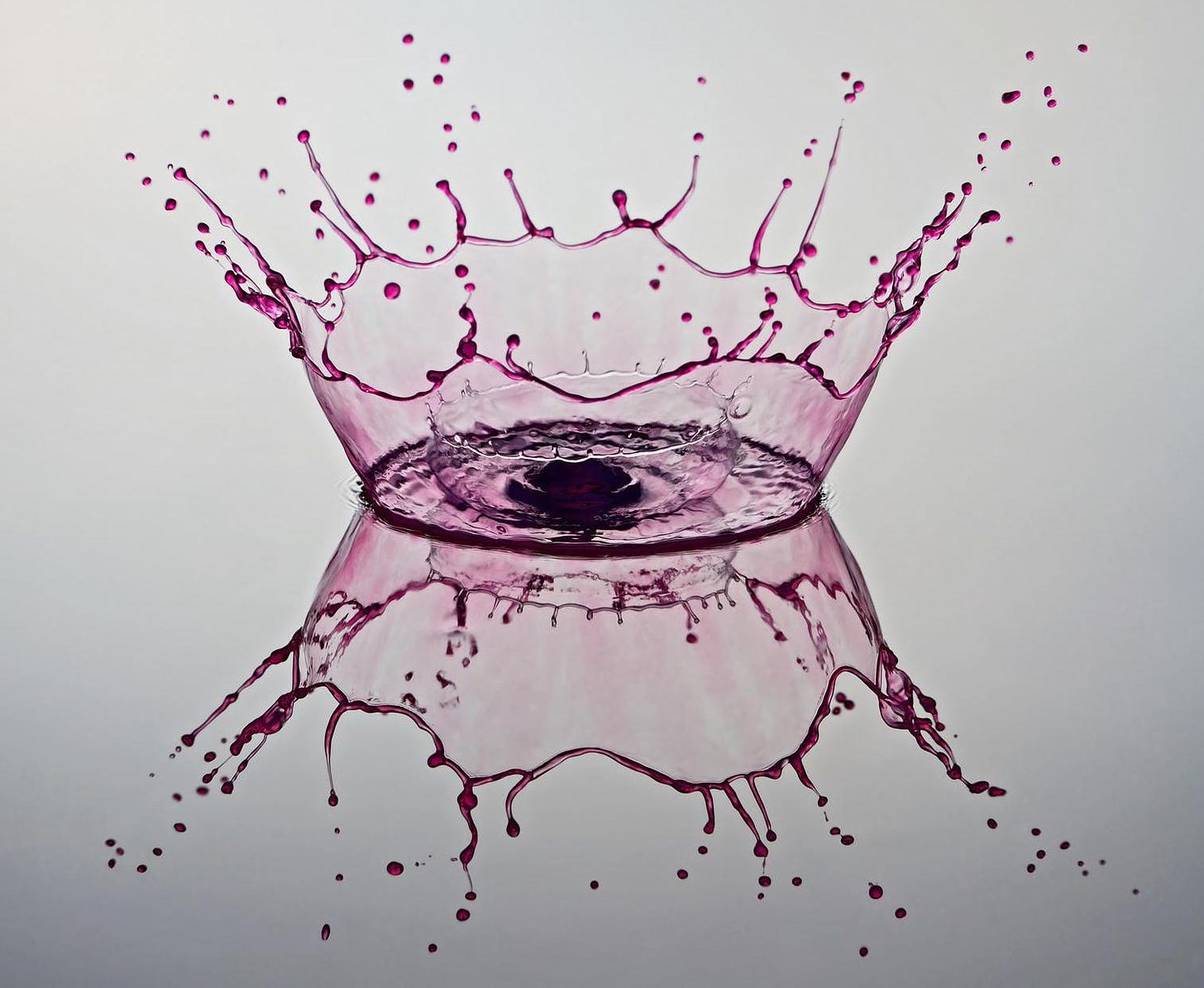
It’s the jubilee weekend, and in a desperate bid to escape the royalist celebrations oozing through the streets of London, I’ve locked myself inside to write about other kinds of queens. Forget Union Jack bunting and Pimms. This is the day to celebrate the queer we. Think of the this as the opposite of the royal we: instead of the monarch using the plural first person to speak on behalf for all her non-consenting subjects, the queer we uses the personal voice to shape a story beyond the confines of the individual self.
Since I started this newsletter some three months ago, I’ve been interested in writing that aims to make collective change. My first post celebrated manifestos as a classic political form, often signed by a group. I singled out Valerie Solanas’s SCUM Manifesto as an example penned by a single person.
But writing and politics – perhaps especially queer writing and politics – are never quite so simple, never so binary as the I vs. we dichotomy might suggest.
The SCUM Manifesto, originally published in New York in 1967, has had a long and twisted history. The founding document of Solanas’s Society to Cut Up Men has inspired and outraged over the decades. It’s given feminism some of its wickedest lines and its brash language makes a twitter storm feel like a light breeze that barely rustles the leaves. The manifesto is also incredibly witty, at times hilarious. Consider Solanas’s take on that classic sixties character, the hippie, whose only desire is to get back to Nature and fill his time with “farming, fucking, bead stringing.” Or this:
“SCUM will conduct Turd Sessions, at which every male present will give a speech beginning with the sentence, ‘I am a turd, a lowly, abject turd’”.
For reasons too obvious to cite, Solanas’s division of the world into men and women, males and females, has aged less well than her searing condemnation of misogyny and capitalism. But what’s interesting about the SCUM Manifesto is less the fact that Solanas was a woman of her age than how the tract has travelled through time, crafting community along its way.
Michelle Tea’s Against Memoir, a collection of essays steering us through the author’s queer journeys – literal and dreamlike, sometimes nightmarish – around the United States from the nineties to the twenty-tens, opens with the piece “On Valerie Solanas”. Tea discovered the SCUM Manifesto during what she calls her Radical Lesbian Feminist Nervous Breakdown, a period of terrifying and terrified reckoning with the realities of sexist and sexual violence, including at home. When Tea found SCUM and learned a bit about Solanas’s life she immediately recognised in the essay’s outrageous proposals for dispensing with men the traces of trauma. Tea delighted in the searing humour Solanas uses to take on the brutalities of structural sexism and poverty, at the same time recognising that her commentary was deadly serious. In Tea’s words,
“The hilarity in the Manifesto is fighting fire with fire.”
Tea sees Solanas not as a relic of an embarrassingly essentialist bygone era, but as a fellow traveller who continues to live in the realities and attitudes of radical queerness in the twenty-first century:
“I live in a large community of would-be Valeries – queer people, formerly or presently female, many of whom have survived the violence of their heterosexual families … In the end, it may be the criminals, the prostitutes, and the artists who claim her.”
This line is the lead-in to a memory of the HAGS, a gang of twenty-something butch dykes – “all, for the record, hot. Valerie would not have looked out of place among them” – who wandered like a pack around the queer scene in the Mission district of San Francisco in the 1990s. It was a HAG who taught Tea (at the time “prostituting and writing [her] own manifesto”) that Solanas had died in a hotel in the Tenderloin. The HAG approached Tea while she was writing in a café, asking to borrow some paper so they could make stencils in honour of Solanas and tag them in the area.
This tale acts as a teaser for the longest and, to my mind, best chapter in Against Memoir, “HAGS in Your Face” – part memoir, part oral history, part homage to this “motley crew of surly twentysomethings resembling Peter Pan’s Lost Boys if the Lost Boys were girls, the sort of girls who look like the sort of boys who might break a beer bottle over your head at a club”. The fact that the café encounter features here again, but with a different HAG in the starring role, is not just a reminder of the murkiness of memory, but adds to the sense of the HAGS as a unit, bonded but each with her/his (a number of the surviving members have since transitioned to men) unique tale. Re-reading the final pages of the SCUM Manifesto alongside Tea’s account, I sense why the HAGS were drawn to Solanas’s essay, even perhaps saw themselves in it:
“SCUM [are] dominant, secure, self-confident, nasty, violent, selfish, independent, proud, thrill-seeking, free-wheeling, arrogant females who consider themselves fit to rule the universe … dropping out is not the answer; fucking up is”.
Tea weaves individual HAGS’ stories, personalities, presentations – “Mohawk… stiff as plastic … denim vest covered in studs…”; “a dyke into metal, sporting super-long dyed black hair”; “Gaunt, gray-skinned, a fisherman’s cap pulled onto her head, bangs spilling out” – not only into an account of the gang itself but into a wider history. The Mission of the 90s has long since disappeared (not least thanks to the staggering redevelopment of the area over the past 25 years, as well as the changes in queer communities/identities) but continues to fertilise the creative work of Tea and many others who lived through that time. Music and art – films, performance, graffiti – were at the heart of the HAGS’ universe. So were drugs – the kind that are legally prohibited and leave their users vulnerable to criminalisation and dangerous supplies. This is not a romantic story; by the end of the decade at least two HAGS had died before 30 from a bad batch of heroin, stigmatised and mocked in the mainstream media in death as they had been ostracised in life. Like Solanas, the HAGS knew the violence of misogyny and homophobia, as well as class exclusion and racism (most were working-class white or Latine), first hand.
Tea uses herself as witness (“when they poured into a bar, my breath caught in my chest”), following the trails of these young rebels who were thick as thieves, loved and fought over femmes, scrawled messages for each other in chalk on sidewalks, and tagged themselves proudly all over town, to make of the brief but earth-shattering HAGS moment something much bigger.
Maybe it’s the historian in me; maybe its because I see in the HAGS a shadow of the cute and fierce baby butches I hung out with in Madrid and Montreal in the early 90s. Whatever the case, Tea’s writing fills me with the power of these incredible imperfect humans – three decades and thousands of kilometres away, reminding me how much we need such stories to shape our own visions of change. Written in the queer we, “HAGS in Your Face” is a tale for all we queens.




The last sentence is so perfect and timely! It stands back as a countersignature of the bloody Jubilee weekend.
I got to give you a graphic I made ages ago inspired by QueerSquat in Dalston and Valerie S.